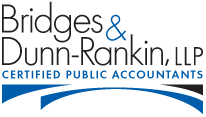C-corp with Net Operating Loss Carryforwards? Watch out for IRC §382
By Kenneth H. Bridges, CPA, PFS March 2011
Early stage companies often incur tax losses in their first few years of existence. And even mature companies can have loss years; particularly companies in cyclical industries. Fortunately, the tax law generally provides that operating losses can be carried back 2 years or forward 20 years.
In order to prevent “trafficking” in net operating losses (NOLs), tax rules place potentially severe limitations on the use of a company’s tax losses and tax credits following a change in ownership. These rules can be a trap for the unwary.
IRC sections 382 and 383 provide that, where the ownership of a company changes by more than 50 percentage points in any 3-year period, the ability of the company to deduct its tax carryforwards in any future year is limited to the value of the company on the date the 50-percentage point threshold is crossed multiplied by a fluctuating rate that is currently around 4%. In other words, if the value of the company is $1 million at the time of the ownership change, then its ability to use its loss carryforwards is limited to $40,000 per year, no matter how large its carryforward may be.
In situations where all of the stock of a company is sold, it is pretty clear that these rules apply, unless the value of the company is more than 25 times the amount of its loss carryforwards. However, where these rules can sneak up and bite you is when you are raising equity capital; particularly, in situations where you have multiple rounds of venture capital, for example. The 50-percentage point test is based on value of shares, not number of shares, so even if the founders continue to hold greater than 50% of the common stock, the limitation can be triggered by the issuance of preferred stock (which typically has greater value due to its liquidation preferences).
An entrepreneur trying to build a company certainly doesn’t want to let the tax tail wag the dog, and we generally wouldn’t recommend foregoing needed equity capital to avoid these rules. However, with knowledge of the rules and careful planning you can generally avoid unnecessarily triggering these limitations and wasting a potentially valuable asset.
Kenneth H. Bridges, CPA, PFS is a partner with Bridges & Dunn-Rankin, LLP an Atlanta-based CPA firm.
This article is presented for educational and informational purposes only, and is not intended to constitute legal, tax or accounting advice. The article provides only a very general summary of complex rules. For advice on how these rules may apply to your specific situation, contact a professional tax advisor.
